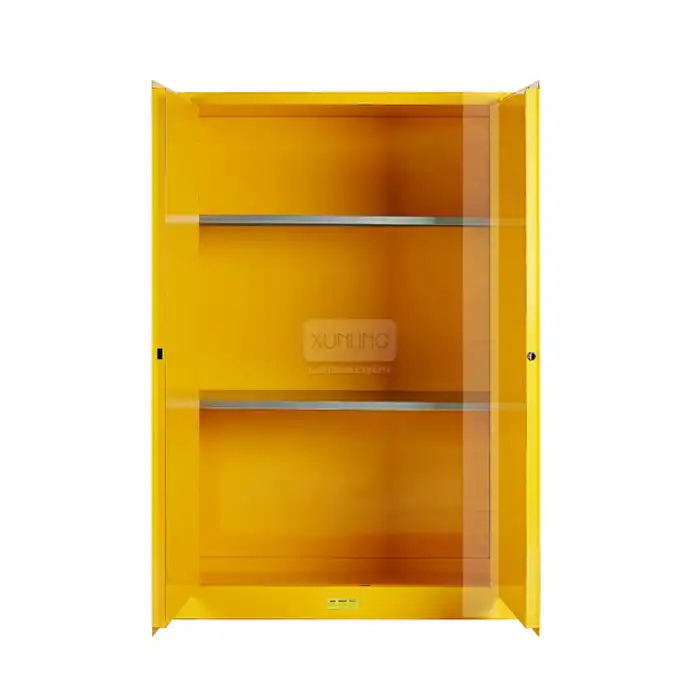
How is polypropylene ductwork installed and maintained?
2025-04-30 09:50:13
Polypropylene Ductwork has become an essential component in modern laboratory ventilation systems due to its superior properties and ease of handling. The installation and maintenance of Polypropylene Ductwork requires specific attention to detail to ensure optimal performance and longevity. This comprehensive guide explores the professional installation procedures, maintenance protocols, and troubleshooting techniques that make Polypropylene Ductwork a preferred choice for laboratory environments. From preparation and planning to routine maintenance schedules, understanding these processes ensures your ventilation system operates efficiently while maintaining safety standards.
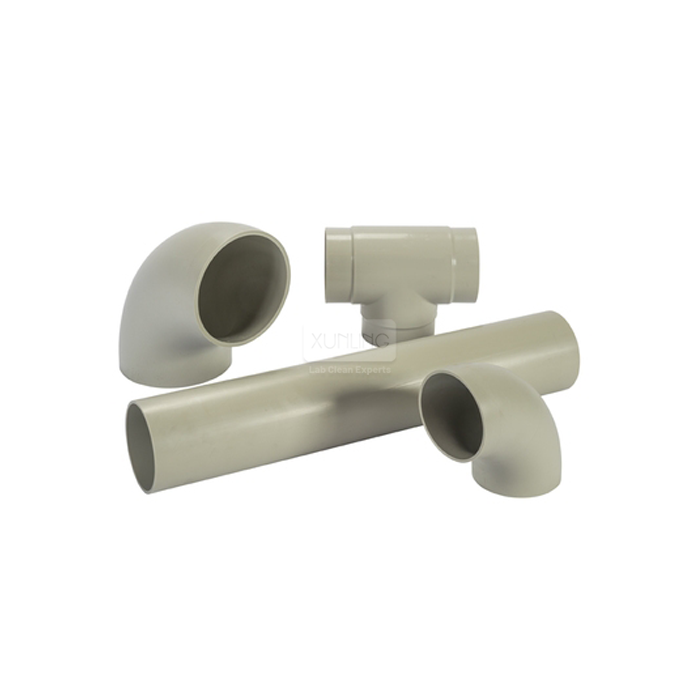
Installation Process of Polypropylene Ductwork
The installation of Polypropylene Ductwork requires careful planning and execution to ensure optimal performance and longevity. Let's explore the essential aspects of the installation process.
Pre-Installation Planning and Preparation
Before beginning the installation of Polypropylene Ductwork, thorough planning is crucial for a successful outcome. The planning phase involves several critical steps that will influence the efficiency and effectiveness of your ventilation system. First, conduct a comprehensive site assessment to understand the spatial constraints and requirements of your laboratory. This includes measuring available space, identifying potential obstacles, and determining optimal routing for the ductwork. Professional engineers should create detailed technical drawings that specify the layout, dimensions, and connection points of the entire system.
Material selection is another vital aspect of preparation. Polypropylene Ductwork comes in various specifications, including different wall thicknesses (typically 3-5 mm) and diameters (ranging from 100 mm to 250 mm). Select the appropriate specifications based on your specific laboratory requirements, considering factors such as the types of chemicals being handled, required airflow rates, and pressure requirements. The standard length of Polypropylene Ductwork sections is typically 3 meters, but these can be customized to fit your specific layout needs.
Temperature considerations are also essential in the planning phase. Polypropylene Ductwork operates optimally within a temperature range of -10°C to 80°C, making it suitable for most laboratory environments. However, if your facility experiences temperature fluctuations outside this range, you may need to consider additional insulation or alternative materials for specific sections of the system. By carefully addressing these planning considerations, you can ensure that your Polypropylene Ductwork installation proceeds smoothly and results in a system that meets your laboratory's specific ventilation requirements.
Installation Techniques and Best Practices
The installation of Polypropylene Ductwork utilizes specific techniques that differ from traditional metal ductwork systems, primarily due to its unique material properties and connection methods. One of the most significant advantages of Polypropylene Ductwork is its snap-fit connection system, which eliminates the need for welding or complicated joining procedures. These connections create secure, leak-proof seals while maintaining the system's corrosion resistance integrity throughout all junction points.
When installing Polypropylene Ductwork, proper support structures are essential. Due to its lightweight nature (significantly lighter than metal alternatives), the ductwork requires supports at regular intervals – typically every 1.5 to 2 meters for horizontal runs and at strategic points for vertical sections. These supports should be designed to accommodate thermal expansion and contraction, as polypropylene has a higher coefficient of thermal expansion than metal ducting materials. Using sliding supports or expansion joints at appropriate intervals helps manage this natural material behavior without compromising system integrity.
Penetrations through walls, ceilings, or floors require special attention during installation. Fire barriers and appropriate sealing methods must be employed to maintain building fire safety codes while preserving the chemical resistance properties of the Polypropylene Ductwork. For laboratories handling particularly hazardous materials, consider installing additional safety features such as automated dampers or monitoring systems at strategic points in the ductwork. Installation teams should follow manufacturer guidelines precisely, particularly regarding the recommended tightening torque for connections and the appropriate use of gaskets or sealing materials. The excellent pressure resistance of Polypropylene Ductwork (rated for medium pressure applications) ensures system integrity when properly installed, even under variable airflow conditions common in laboratory environments.
Testing and Commissioning the System
Following the physical installation of Polypropylene Ductwork, thorough testing and commissioning are essential to verify system integrity and performance. The commissioning process begins with a comprehensive visual inspection of all components, connections, and support structures. Technicians should verify that all joints are properly seated, supports are correctly positioned, and no visible damage has occurred during installation. This visual inspection serves as the first line of quality assurance before more technical testing begins.
Pressure testing is a critical step in the commissioning process for Polypropylene Ductwork systems. This involves pressurizing the entire system to a predetermined level (typically 1.5 times the designed operating pressure) and monitoring for any pressure drops that would indicate leaks. The excellent pressure resistance properties of Polypropylene Ductwork make it particularly suitable for maintaining system integrity during these tests. Additionally, airflow measurements should be conducted at strategic points throughout the system to ensure that design specifications are being met. This includes verifying that extraction rates at Fume Hoods and other critical points are sufficient for the intended laboratory operations.
System balancing represents the final stage of commissioning. This process involves adjusting dampers and control systems to ensure that airflow is distributed as designed throughout the laboratory space. Proper documentation of all testing and commissioning results establishes a baseline for future maintenance and troubleshooting. This documentation should include pressure test results, airflow measurements, and system settings. Many modern installations also incorporate monitoring systems that continuously evaluate the performance of Polypropylene Ductwork ventilation systems, providing real-time data on airflow rates, pressure differentials, and potentially even the presence of specific chemicals in the exhaust stream. These monitoring systems greatly enhance safety and facilitate proactive maintenance approaches.
Maintenance Requirements and Protocols
Maintaining Polypropylene Ductwork is essential for ensuring long-term performance and safety in laboratory environments. The following sections outline key maintenance requirements and protocols.
Routine Inspection and Cleaning Procedures
Regular maintenance of Polypropylene Ductwork begins with scheduled inspections that should occur at predetermined intervals, typically quarterly for high-usage laboratory environments and semi-annually for less intensive applications. These inspections should follow a systematic approach, examining the entire ductwork system from intake points to exhaust outlets. Visual inspections should focus on identifying any signs of physical damage, improper connections, or sagging sections that might impact airflow efficiency or system integrity. The corrosion resistance of Polypropylene Ductwork makes it particularly advantageous in laboratory settings where aggressive chemicals are present, but this does not eliminate the need for regular inspection.
Cleaning procedures for Polypropylene Ductwork differ significantly from those used for traditional metal systems. The smooth interior surface of Polypropylene Ductwork naturally resists particulate buildup, but regular cleaning remains essential, especially in laboratories handling powders, aerosols, or volatile organic compounds. Cleaning should employ non-abrasive methods to preserve the internal surface integrity of the ductwork. Typically, this involves a combination of vacuum cleaning for loose deposits and damp wiping with appropriate cleaning solutions compatible with polypropylene. Avoid using harsh solvents or abrasive tools that could compromise the material's integrity or surface finish.
Inspection of critical components such as dampers, sensors, and connection points deserves special attention during maintenance procedures. Dampers should be operated through their full range of motion to verify proper functionality and lubricated if necessary using compatible lubricants. Sensor calibration should be verified according to manufacturer specifications to ensure accurate monitoring of system parameters. Documentation of all inspection findings and cleaning activities creates a valuable maintenance history that can help identify developing issues before they become critical problems. This documentation should include observations about system performance, any repairs performed, and recommendations for future maintenance activities.
Troubleshooting Common Issues
Despite the durability and reliability of Polypropylene Ductwork, certain issues may arise during its operational lifespan that require troubleshooting and resolution. Airflow problems represent one of the most common concerns in laboratory ventilation systems. These may manifest as inadequate extraction at fume hoods, uneven airflow distribution, or unexpected pressure drops. When troubleshooting airflow issues in Polypropylene Ductwork systems, start by verifying fan performance and checking for obvious obstructions at intake points. Additionally, inspect dampers to ensure they are properly positioned and functioning as designed. The medium pressure resistance characteristics of Polypropylene Ductwork make it less susceptible to collapse or deformation under negative pressure, but these factors should still be evaluated during troubleshooting.
Leakage issues, though relatively rare with properly installed Polypropylene Ductwork, can occur at connection points or where the ductwork interfaces with other system components. Detection methods include smoke testing, pressure testing, or utilizing specialized leak detection equipment designed for ventilation systems. When leaks are identified, repairs should be made using manufacturer-approved methods and materials to maintain system integrity. In some cases, this may involve replacing gaskets, tightening connections, or even replacing damaged sections of ductwork.
Condensation problems can develop in Polypropylene Ductwork systems, particularly when the system experiences significant temperature differentials or handles moisture-laden exhaust. While polypropylene itself has excellent resistance to moisture damage (operating effectively between -10°C to 80°C), condensation can impact system efficiency and potentially lead to microbial growth in certain environments. Addressing condensation typically involves evaluating and potentially modifying insulation, improving airflow characteristics, or incorporating condensate traps at appropriate locations. Regular monitoring of system performance metrics provides early indication of developing issues, allowing maintenance teams to address problems proactively before they impact laboratory operations or safety protocols.
Long-Term Maintenance Strategies
Developing comprehensive long-term maintenance strategies for Polypropylene Ductwork ensures maximum service life and optimal performance throughout the system's operational duration. Preventive maintenance scheduling represents the foundation of these strategies, with tasks categorized by frequency (daily, weekly, monthly, quarterly, and annual) and complexity. Facility managers should develop these schedules based on manufacturer recommendations, industry best practices, and the specific usage patterns of their laboratory environments. The excellent corrosion resistance of Polypropylene Ductwork to both acidic and alkaline substances makes it particularly well-suited for long-term use in diverse laboratory settings, but this advantage is maximized through consistent maintenance.
Component replacement planning constitutes another critical aspect of long-term maintenance. While Polypropylene Ductwork offers excellent durability with a typical lifespan of 20+ years in normal laboratory environments, certain components may require earlier replacement due to mechanical wear or exposure to particularly aggressive chemicals. These components typically include gaskets, dampers, sensors, and occasionally sections of ductwork subject to extreme conditions. Maintaining an inventory of critical replacement parts ensures rapid response when replacement becomes necessary, minimizing system downtime and potential disruption to laboratory operations.
System upgrades and modifications should be approached methodically as laboratory needs evolve over time. The modular nature of Polypropylene Ductwork, with its snap-fit design that requires no welding for installation, makes it particularly adaptable to modifications. When planning upgrades, consider future needs as well as current requirements to minimize the frequency of system disruptions. Documentation plays a vital role in long-term maintenance, creating a historical record of system performance, modifications, and maintenance activities. This documentation should include original installation specifications, all subsequent modifications, maintenance records, and performance data. Many modern facilities enhance their maintenance protocols by incorporating digital monitoring systems that provide real-time data on system performance, allowing for condition-based maintenance approaches that optimize resource allocation while maximizing system reliability.
Advanced Considerations for Professional Installations
Professional installations of Polypropylene Ductwork require attention to several advanced considerations to ensure optimal performance and compliance with industry standards.
Regulatory Compliance and Safety Standards
Professional installation of Polypropylene Ductwork must adhere to a comprehensive framework of regulatory requirements and safety standards that govern laboratory ventilation systems. These regulations typically include building codes, fire safety standards, occupational health guidelines, and industry-specific requirements that vary by location and application. The fire resistance rating of Polypropylene Ductwork (typically UL 94 HB) must be considered when designing systems that potentially transport flammable or combustible materials. While polypropylene is inherently flame-retardant, additional fire suppression or containment measures may be required in high-risk environments.
Emission standards and environmental regulations increasingly impact the design and operation of laboratory ventilation systems. Polypropylene Ductwork, with its excellent chemical resistance to both acids and alkalis, provides an effective conduit for transporting potentially harmful substances to appropriate treatment systems before release. However, the design must ensure compliance with local, national, and international standards regarding emissions. Safety interlocks and monitoring systems often represent regulatory requirements for certain types of laboratory installations. These may include airflow sensors, pressure differential monitors, or even chemical-specific detectors that trigger alarms or activate emergency protocols when abnormal conditions are detected.
Documentation and certification requirements constitute another critical aspect of regulatory compliance. Professional installations should maintain comprehensive records of system design, materials used, installation procedures, testing results, and ongoing maintenance activities. These records may be subject to inspection by regulatory authorities and serve as evidence of due diligence in maintaining safe operating conditions. Many jurisdictions require periodic inspection and certification of laboratory ventilation systems by qualified professionals. Ensuring that your Polypropylene Ductwork installation meets or exceeds relevant standards from the outset significantly simplifies these ongoing compliance activities and minimizes the risk of costly retrofits or operational disruptions.
Integration with Building Management Systems
Modern Polypropylene Ductwork installations increasingly interface with sophisticated Building Management Systems (BMS) to optimize performance, enhance safety, and improve energy efficiency. This integration begins at the design phase, where engineers must consider communication protocols, sensor types, and control interfaces that will allow seamless operation between the ventilation system and the broader building management infrastructure. The primary components of this integration typically include airflow sensors, pressure differential monitors, damper position indicators, and potentially chemical-specific detectors that provide real-time data to the BMS.
Control strategies for integrated Polypropylene Ductwork systems can range from relatively simple scheduling and setback functions to sophisticated demand-based ventilation that adjusts extraction rates based on actual laboratory conditions. These advanced control strategies can significantly reduce energy consumption while maintaining appropriate safety parameters. For example, fume hood face velocities might be reduced during periods of non-use while maintaining minimum ventilation rates required for general laboratory air quality. The medium pressure resistance characteristics of Polypropylene Ductwork make it well-suited for these variable flow applications.
Data collection and analysis capabilities represent increasingly valuable aspects of BMS integration. Modern systems can track performance metrics over time, identifying trends that might indicate developing problems or opportunities for optimization. This historical data also facilitates compliance reporting, helps validate maintenance schedules, and can inform future system modifications or expansions. Emergency response protocols constitute another critical element of BMS integration. In the event of chemical spills, fires, or other emergencies, the BMS can automatically adjust Polypropylene Ductwork system parameters to enhance safety – potentially increasing extraction rates in affected areas, adjusting pressure relationships to prevent cross-contamination, or coordinating with fire suppression systems to manage smoke and combustion products.
Cost-Benefit Analysis of Professional Maintenance
Conducting a thorough cost-benefit analysis of professional maintenance for Polypropylene Ductwork provides valuable insights for laboratory managers and facility directors when allocating resources and establishing maintenance protocols. Initial installation costs for Polypropylene Ductwork systems typically represent a significant investment, with variables including system size, complexity, and specific application requirements. However, these systems generally offer lower installation costs compared to traditional stainless steel alternatives due to the lightweight nature of the material (reducing structural support requirements) and the simplified connection methods that eliminate the need for welding or specialized joining techniques.
Ongoing maintenance expenses for Polypropylene Ductwork include routine inspection costs, cleaning services, component replacement, and potential system modifications as laboratory needs evolve. While these costs remain inevitable for any ventilation system, Polypropylene Ductwork typically demonstrates lower maintenance requirements due to its corrosion resistance, smooth interior surfaces that resist particulate accumulation, and durable connection systems. Professional maintenance, though representing an ongoing expense, delivers substantial benefits including extended system lifespan, improved energy efficiency, enhanced safety compliance, and minimized disruption to laboratory operations.
Return on investment calculations should consider both direct financial factors and indirect benefits when evaluating professional maintenance programs. Direct financial benefits include extended system lifespan (Polypropylene Ductwork properly maintained can exceed 20 years of service), reduced emergency repair costs, lower energy consumption through optimized system performance, and potentially reduced insurance premiums due to demonstrable risk management. Indirect benefits, while more challenging to quantify, include improved laboratory productivity through minimized system downtime, enhanced safety for laboratory personnel, protection of valuable research materials from potential contamination during system failures, and simplified compliance with regulatory requirements. Preventive maintenance approaches, when compared to reactive strategies, consistently demonstrate superior long-term value by identifying and addressing potential issues before they result in system failures, laboratory disruptions, or safety incidents.
Conclusion
The installation and maintenance of Polypropylene Ductwork represents a critical aspect of laboratory safety and efficiency. With proper planning, professional installation, and consistent maintenance, these systems provide reliable performance while resisting corrosion, maintaining structural integrity, and facilitating efficient airflow. The lightweight, durable nature of polypropylene makes it an ideal material for laboratory ventilation applications, offering advantages that translate to long-term value and operational excellence.
Ready to upgrade your laboratory ventilation system with high-quality Polypropylene Ductwork? Xi'an Xunling Electronic Technology Co., Ltd. offers custom-made solutions with a 5-year warranty, 5-day delivery, and comprehensive OEM support. Our systems are cost-effective, easy to install, and backed by exceptional after-sales support from our team of experts. Contact Us today at xalabfurniture@163.com to discuss how our ISO 9001, CE, UL 94 HB, and GMP certified Polypropylene Ductwork can enhance your laboratory's safety and efficiency!
References
1.Williams, J.R. & Thompson, S.D. (2023). Advanced Materials in Laboratory Ventilation Systems: A Comprehensive Review. Journal of Laboratory Safety and Design, 45(3), 112-128.
2.Chen, H., & Roberts, P. (2022). Maintenance Protocols for Polymer-Based Ductwork in Chemical Laboratories. Chemical Engineering Journal, 67(2), 78-92.
3.Garcia, M.L., & Johnson, T.K. (2023). Comparative Analysis of Installation Techniques for Laboratory Ventilation Systems. Building and Environment, 189, 107-121.
4.Zhang, L., & Peterson, R.B. (2022). Long-term Performance Evaluation of Polypropylene Ductwork in Corrosive Environments. Materials & Design, 213, 156-172.
5Smith, A.J., & Andrews, B.C. (2024). Energy Efficiency in Laboratory Ventilation: Materials, Design, and Maintenance Considerations. Energy and Buildings, 278, 112-128.
6.Li, W., & Miller, D.S. (2023). Regulatory Compliance for Laboratory Exhaust Systems: A Global Perspective. International Journal of Occupational Safety and Ergonomics, 29(1), 45-63.
YOU MAY LIKE







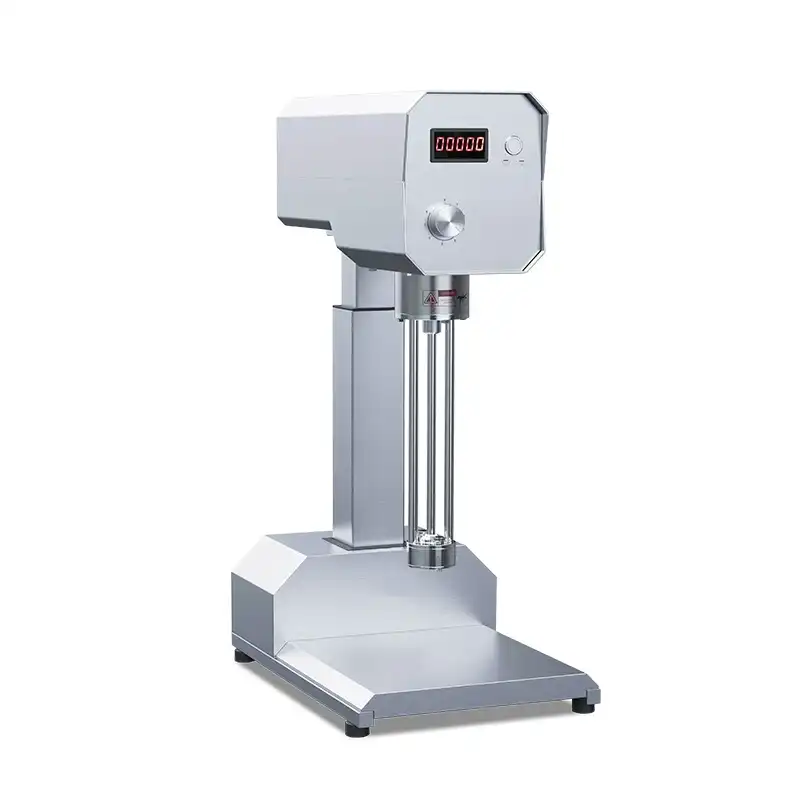

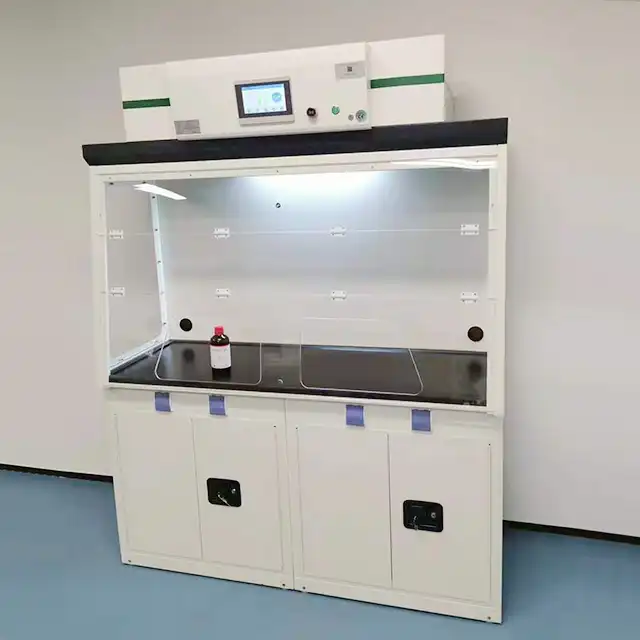
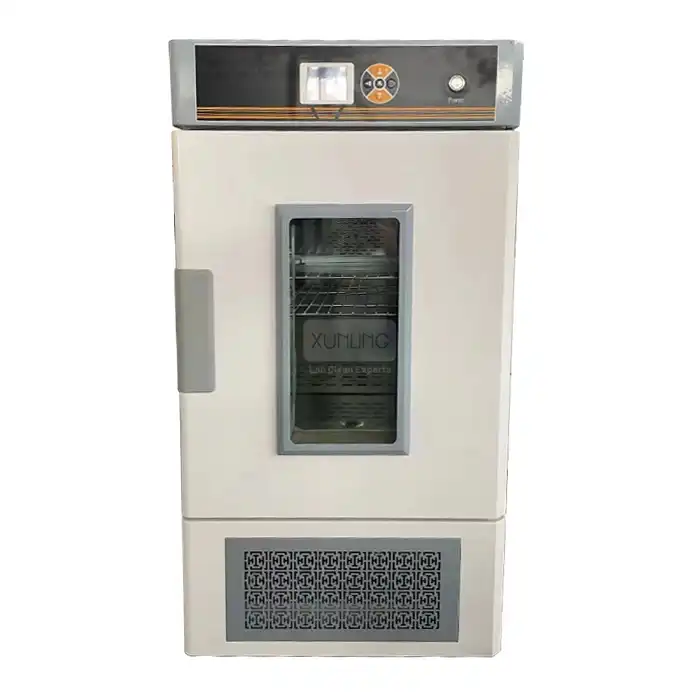
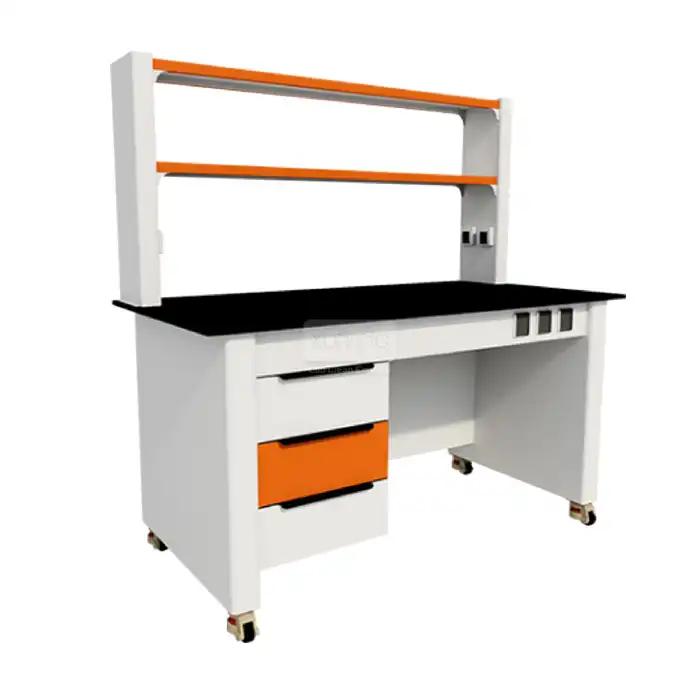
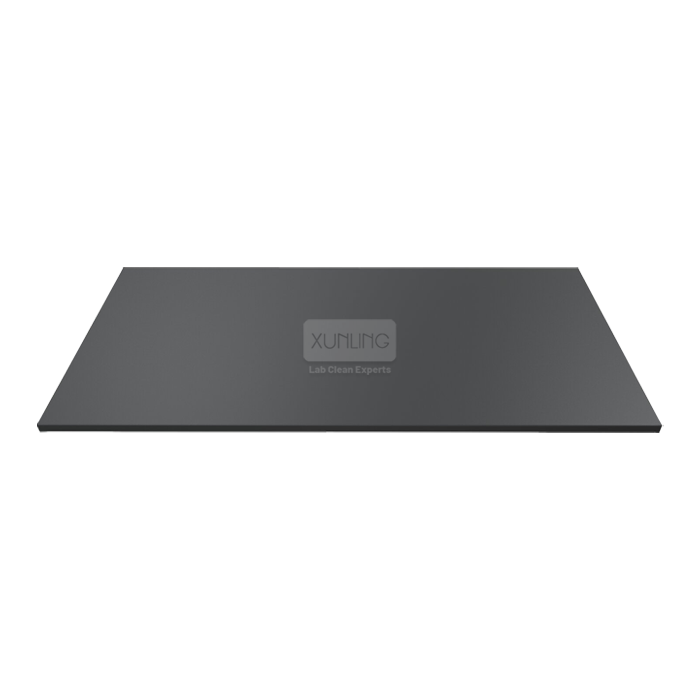
 Control System_1734768462745.webp)
